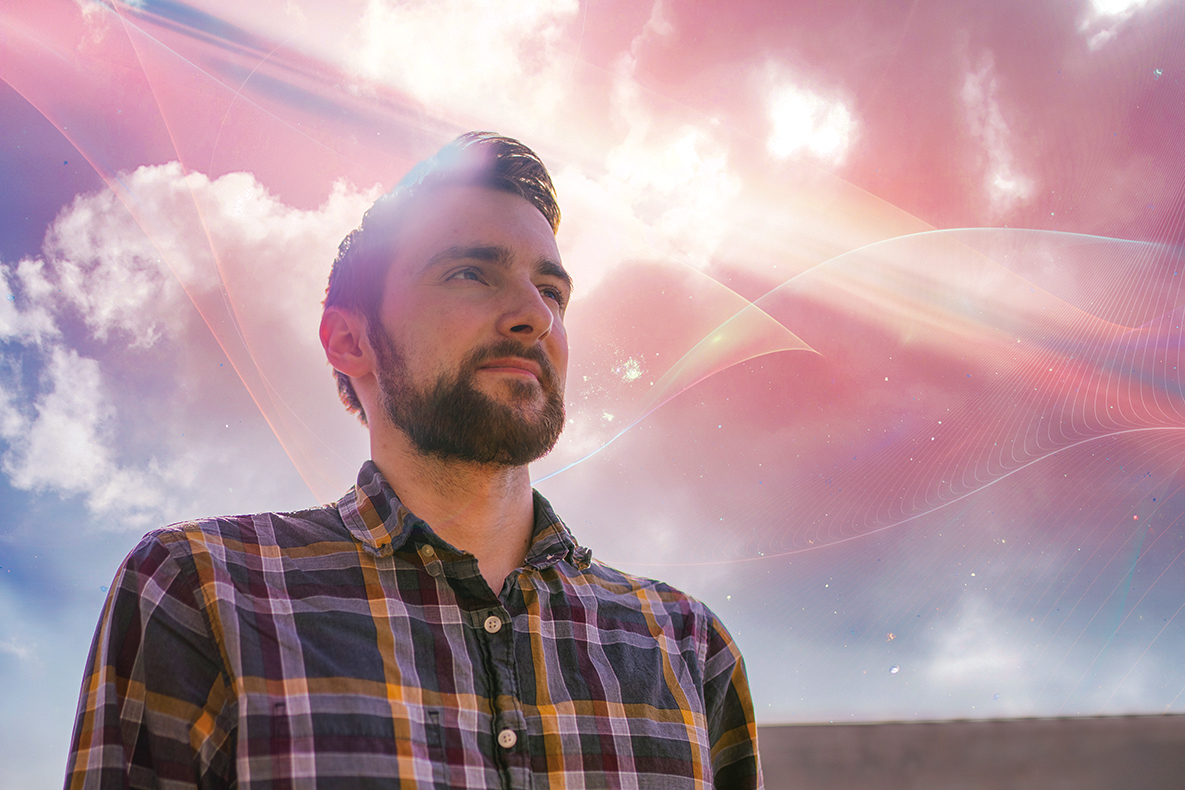The biggest scientific discoveries often don’t start with an application in mind. They start by asking good questions. Like, why are neutrinos so weird? Or, what can the ocean tell us about climate change in Iowa? LAS student researchers share where their questions have led them — from national labs to complex equations.
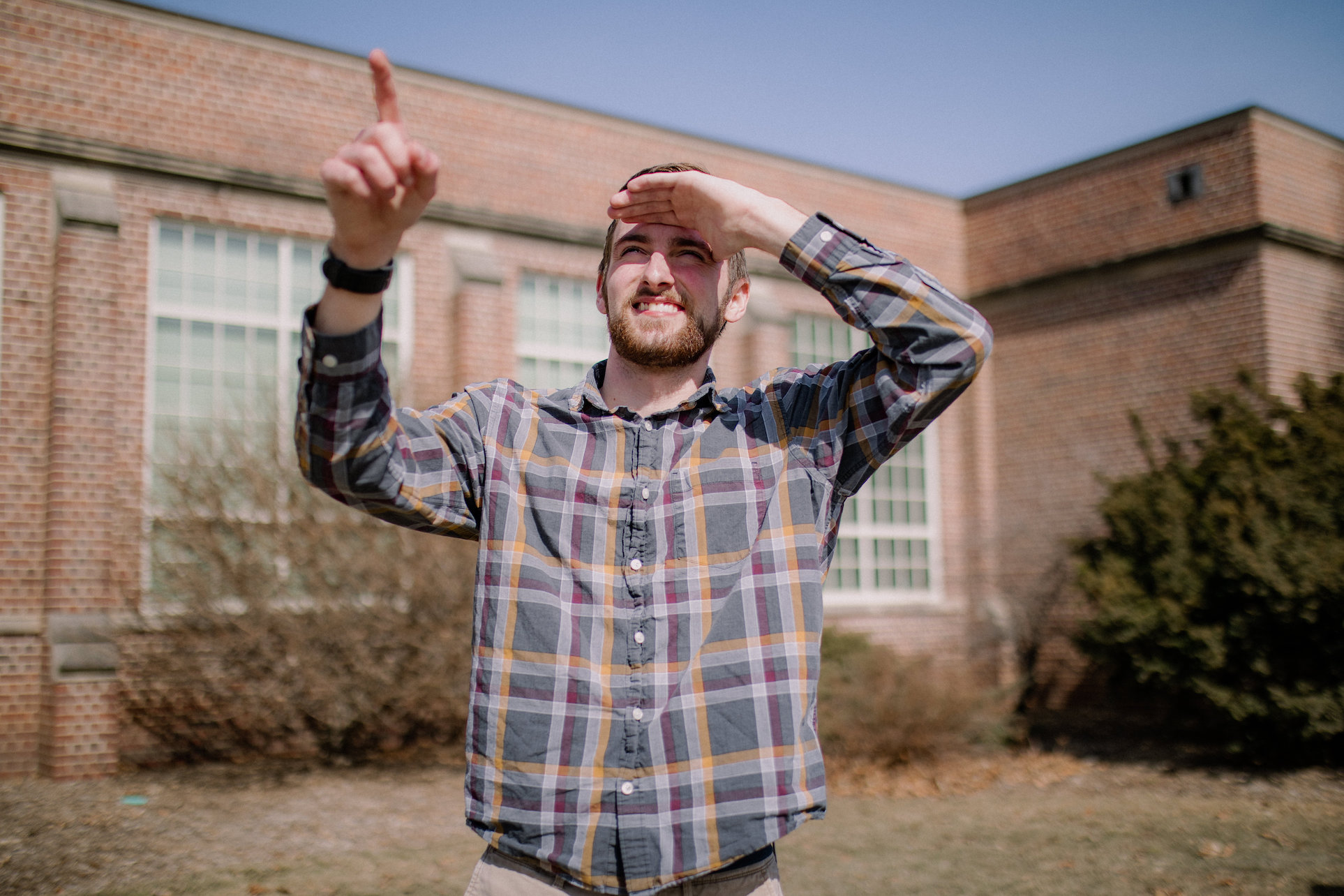
Chasing solar flares
Patrick Stanley (‘22 physics) conducts research in the Department of Physics and Astronomy where he studies solar flares alongside Distinguished Professor Steven Kawaler and researches high-energy astrophysics with Associate Professor of Physics and Astronomy Amanda Weinstein.
The power of solar storms
Something about the wondrous and enigmatic nature of the universe has always captivated me. My stellar astrophysics research involves studying solar flares on other Sun-like stars. Our Sun provides us with the energy we need to live; however, it also has violent outbursts such as solar flares and solar superflares. The only confirmed superflare to ever hit the Earth is known as the Carrington Event, which occurred in 1859. This solar storm caused telegraph systems across the world to short circuit and catch fire.
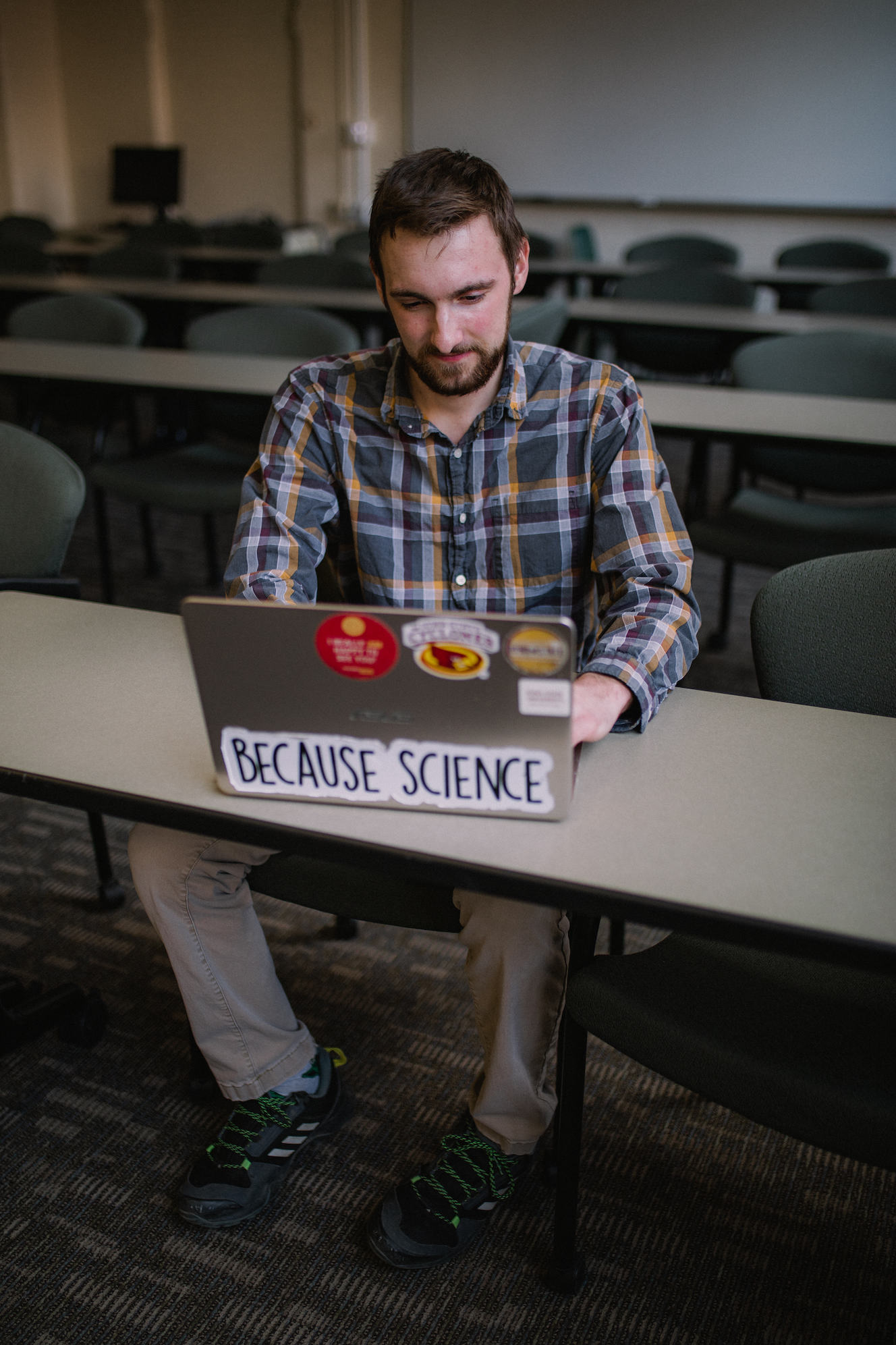
Energetic solar superflares pose a threat to our technology-based civilization. Should such a powerful storm hit our planet today, the consequences could be disastrous. By studying these flares on a large sample of stars like the Sun, we can get a better understanding of how frequently they happen, what mechanisms cause them, if there is an upper limit to how powerful they can be and many more questions.
Scanning space
All my research can be done on my laptop, which makes it very convenient to work wherever I am, including in between classes. It involves programming, math and statistics. I use publicly available data from three space telescopes — Kepler, TESS and Fermi.
Coolest thing I’ve done
I assisted in the operation and data collection of the VERITAS telescope array, which is a set of four gamma ray telescopes in Arizona. As a remote observer, I controlled the telescope, assisted in the selection of observation targets and helped troubleshoot errors.
"Research has inspired me to push the limits of our knowledge."
Exoplanet excitement
One of my favorite moments in research was the first time I accidentally rediscovered an exoplanet. My freshman year I was running some tutorials to make sure Python and some other analysis programs were running correctly. I had picked a star that Kepler observed at random, and it just so happened to be an exoplanet host. I was so excited that I found something cool just by picking a star at random. This excitement has never ceased. Every time I look at something new, it’s like opening a treasure chest.
Pushing humanity forward
Research has inspired me to push the limits of our knowledge. I take great pride knowing that I contribute to a larger pool of scientific knowledge that pushes our species forward. It is very important to me that research remain a collaborative effort by all peoples of the world regardless of race, gender, nationality, sexual orientation or anything else.
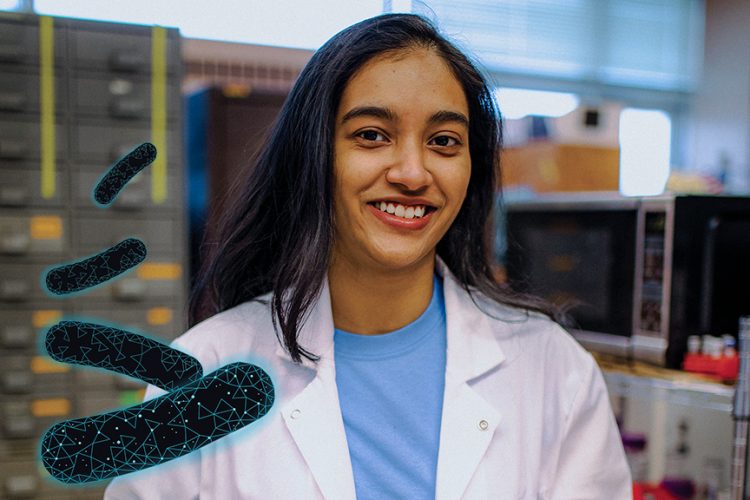
Molecular magic
Tulika Sharan (’22 biochemistry) is on the leading edge of biomedical research with Dipali Sashital, associate professor of biochemistry, biophysics and molecular biology.
Advancing biomedical science
Just as human beings have immune systems, microorganisms such as bacteria and archaea have also developed mechanisms to protect themselves against threats like viral infections. My research looks at how bacteria can form memories of infection that can allow it to target similar threats in the future. I’m trying to determine if and how a specific protein, Cas9, might be involved in this process.
I’ve worked for three years with Dr. Dipali Sashital, who studies CRISPR-Cas systems at Iowa State. It is exciting to know that I am contributing to the field and studying something that hasn’t been thoroughly explored before.
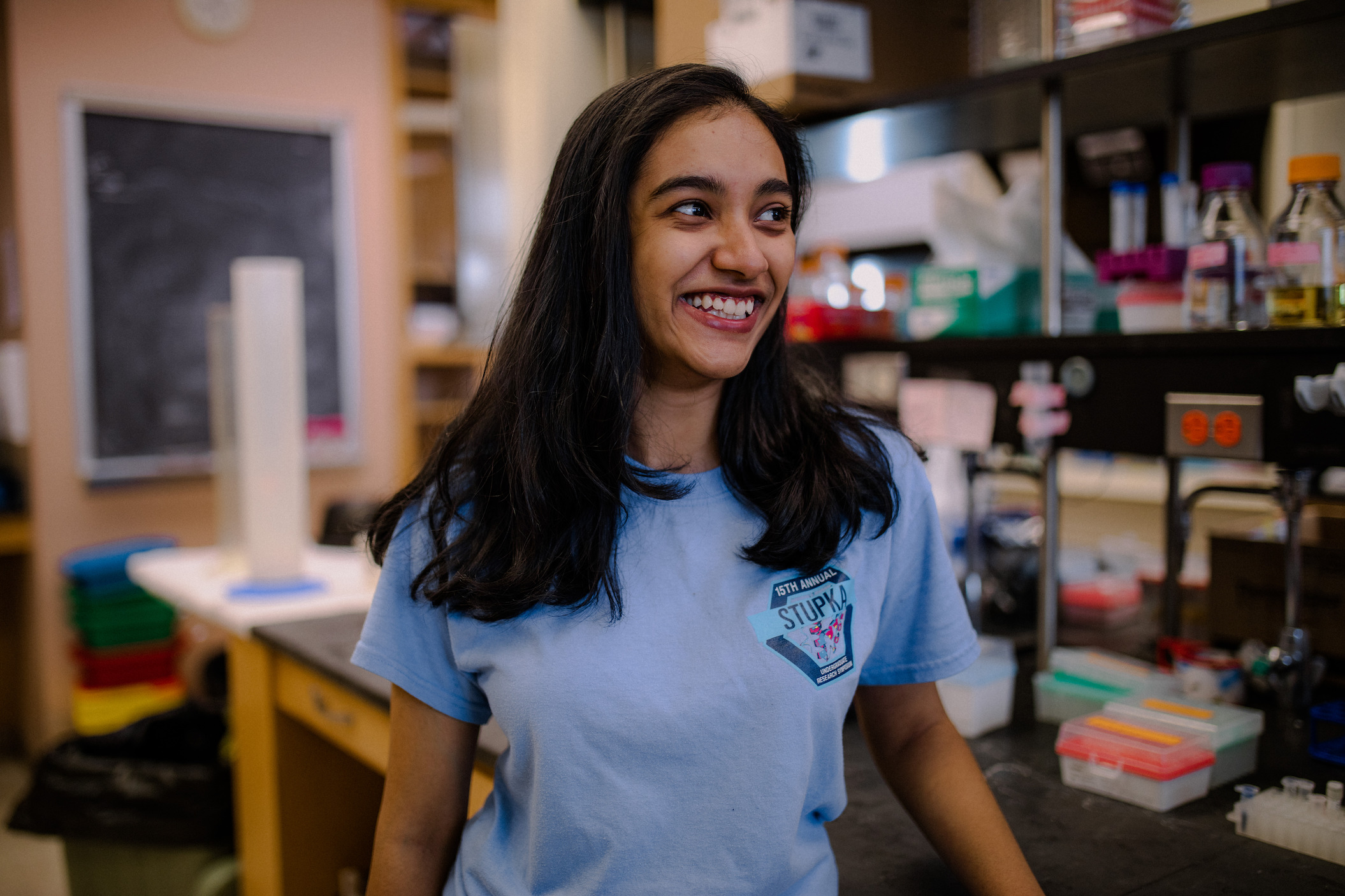
Understanding this field better will allow us to further expand and fine-tune its applications, like in genetic engineering! It also gives us more insight into how bacteria and viruses co-evolve to outcompete each other, knowledge that can be immensely useful in health and disease-related concerns. I want to contribute to the field of biomedical sciences and conduct medically relevant research that can help develop and advance existing treatments.
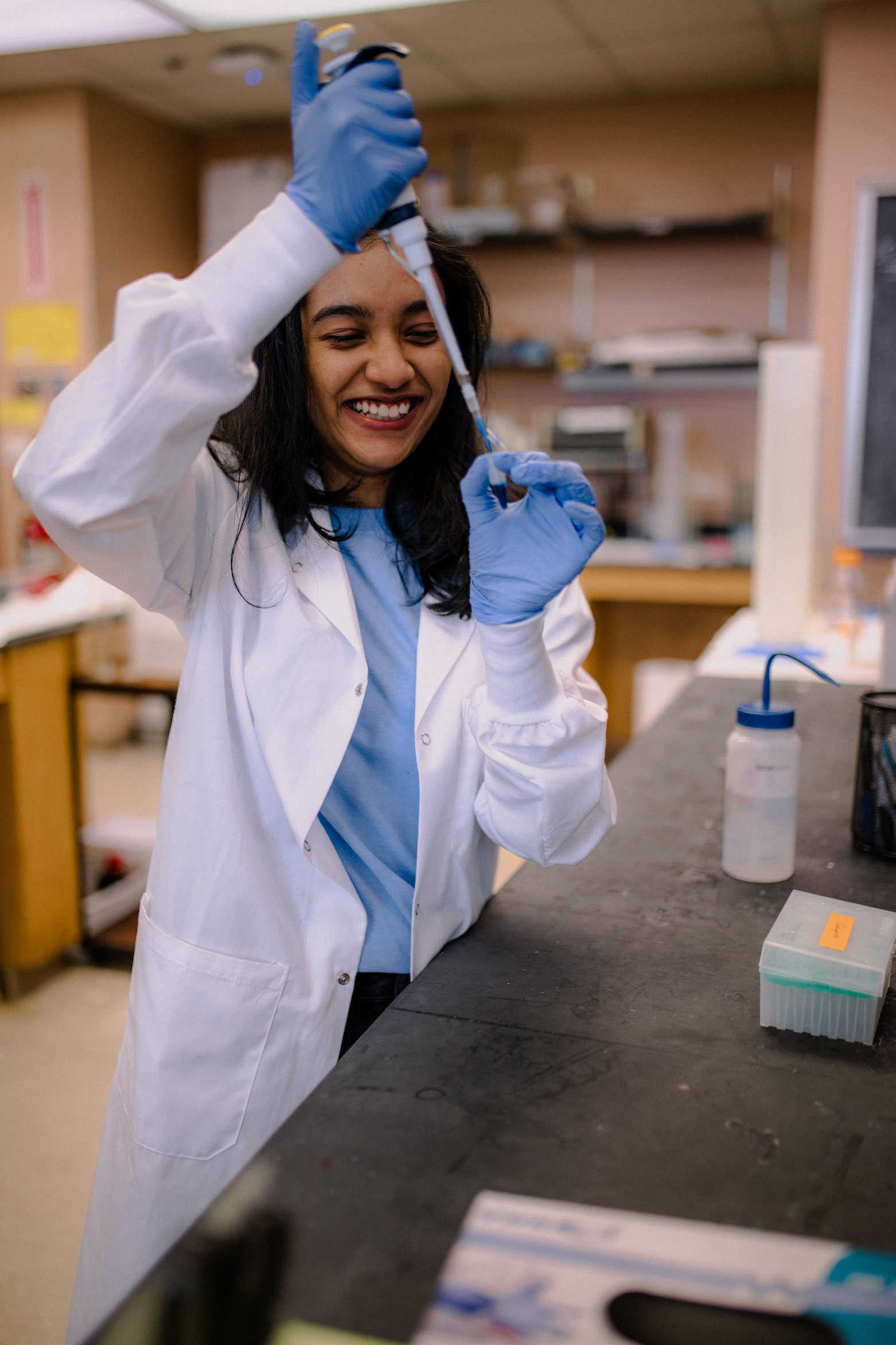
Happiness in the lab
The coolest part of our research is designing clever experiments. Using even the most basic, minimal biochemical assays, we are clearly able to determine complex mechanisms on the molecular level, as long as we’re thinking critically and coming up with well-designed experiments that account for all possibilities. The results we then produce are irrefutable, and it makes me very happy!
My work week
I start with a one-on-one meeting with my research mentor, where we discuss prior results and experiments going forward. I mostly work independently. On days I have experiments to run, I’m at it as soon as I’m in the lab, typically working on molecular cloning. Sometimes the DNA constructs I want to create need to be designed on the computer first. Analyzing results for sequencing reads is also a desk job. However, I like to be in the lab when I do this and occasionally seek the graduate students’ expertise. I usually contact my mentor if things are producing disappointing or confusing results and solicit her guidance whenever I’m unsure of myself or need help learning something new.
"I want to contribute to the field of biomedical sciences and conduct medically relevant research that can help develop and advance existing treatments."
Magical molecules
I think it’s a universal experience to be a bit confused your first time in a scientific research lab. I remember an instance where I was dumbfounded on being handed a tiny tube of clear liquid and told it was the magical molecule of high school biology fables, ATP (adenosine triphosphate).
It took me only a week or so to realize that most substances we use in biochemistry were colorless and superficially unexciting. However, it also drove home the fact that all the excitement is happening at the molecular level and how important it is to understand these mechanisms.
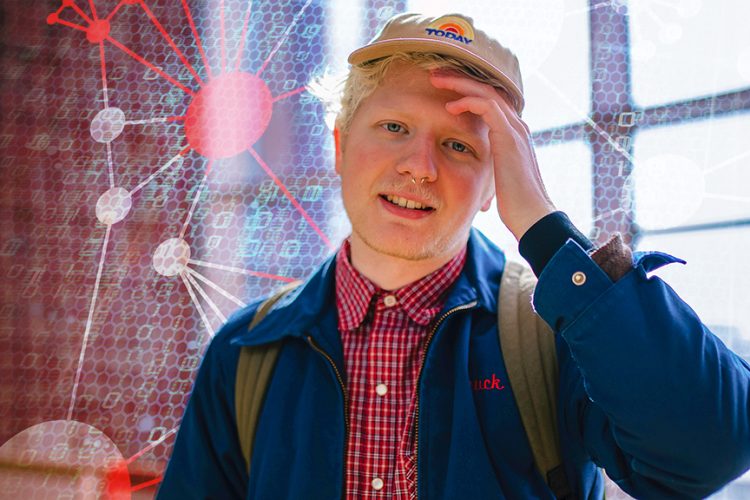
Data for the greater good
Ben Litterer (’22 data science) uses big data to study proteins with Distinguished Professor Robert Jernigan in the Roy J. Carver Department of Biochemistry, Biophysics and Molecular Biology.
Big data and biology
I work in Dr. Robert Jernigan’s lab, where we are interested in using the insights and abilities of powerful computational tools in computer science, statistics and data science to answer fundamental biological questions. Using statistical techniques, my research looks at the functions of proteins and tries to make predictions or improve the understanding of what a particular protein does in your body. Recently, I focused on protein function related to HIV.
Through genome sequencing, scientists have lots of information about protein functions. So, if we have a protein that we know less about, we could find a similar protein and make a statistical estimate on how likely it is to have the same function. We’re mining this huge expanse of knowledge. The more information you have though, the harder it is to look through all of it. It’s like trying to find one particular word at the Iowa State library. I know it’s there, but I don’t know which book to open.
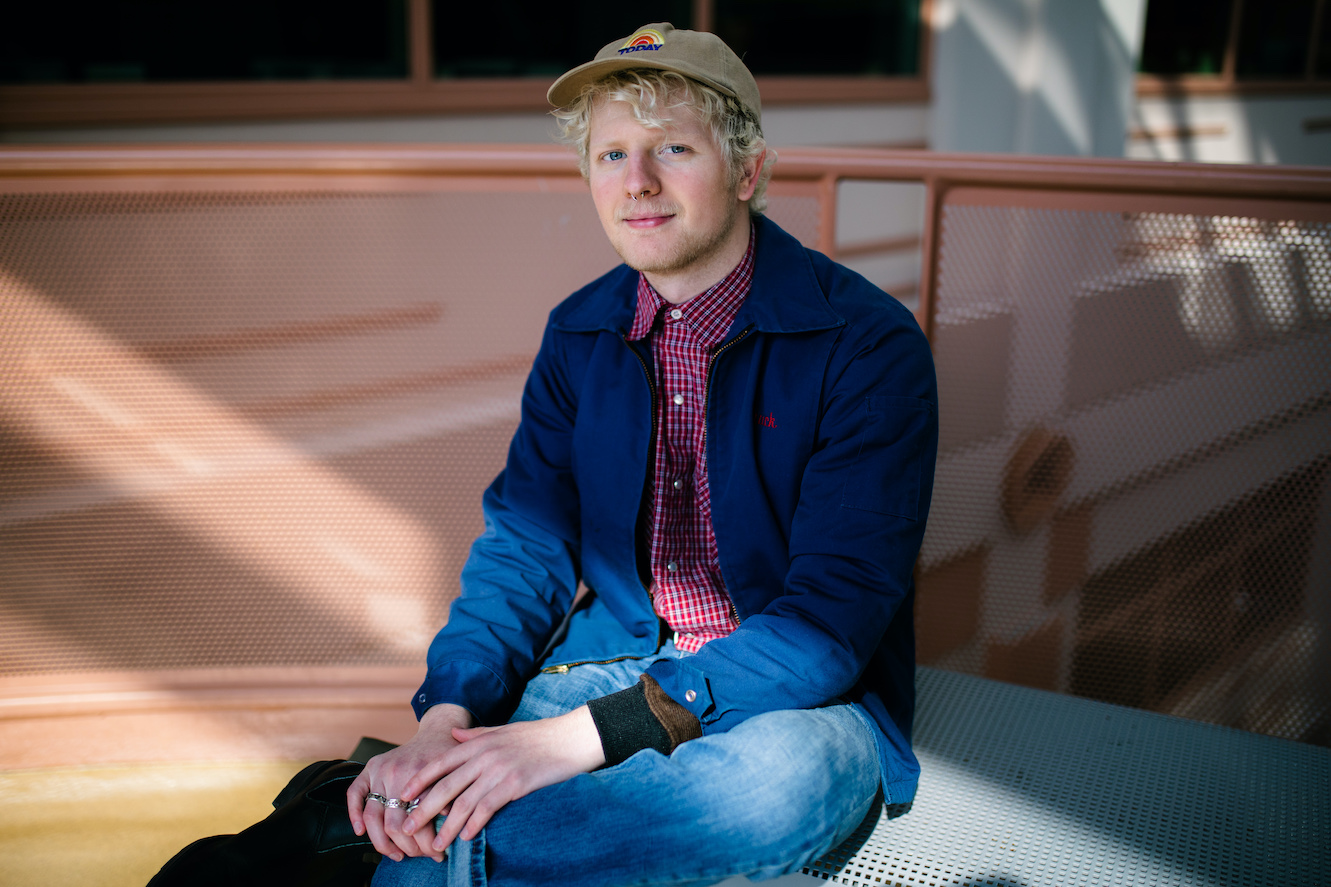
Fundamental questions
One thing I'm interested in learning about is called embeddings. For example, how do you translate a word into a mathematical representation so you can do math with that word in a sentence? Now do that with proteins. Imagine if you have 1,000 proteins and you could treat them like numbers. You could ask, “How far is one protein from another?” and then just subtract them. There are ways of using machine learning to represent proteins as numbers, and I think that is really cool. Once we can do that fundamental thing well, it will solve all these problems about function and structure.
"I think it's important that computation is used responsibly. Rather than using these powerful tools to maximize profit, how can we use them to maximize well-being?"
When I do research
I start by reading. Reading and brainstorming are exciting for me, but it’s a small portion of the time. I also spend a lot of time programming and thinking about the logistical details of implementation, with so much data to process.
Creative conversation
The creativity is the most fun part of research for me. I feel very privileged to be taken seriously in my lab. I remember the first time I shared an idea in a lab meeting about a particular protein function. Some of the graduate students said, “That is a smart idea. You’re getting a knack for what it means to do research.” In the future, I’m excited to be part of the conversation in a community of scientists.
A supportive lab
I’m so grateful for the support from postdocs, graduate students and Dr. Jernigan. It’s the number one thing that’s allowed me to have any success in research. Dr. Jernigan never tells me what to do. He encourages me to keep trying what seems like the right idea. That is incredibly helpful for an undergraduate.
I think it’s important ...
That computation is used responsibly. Rather than using these powerful tools to maximize profit, how can we use them to maximize well-being?
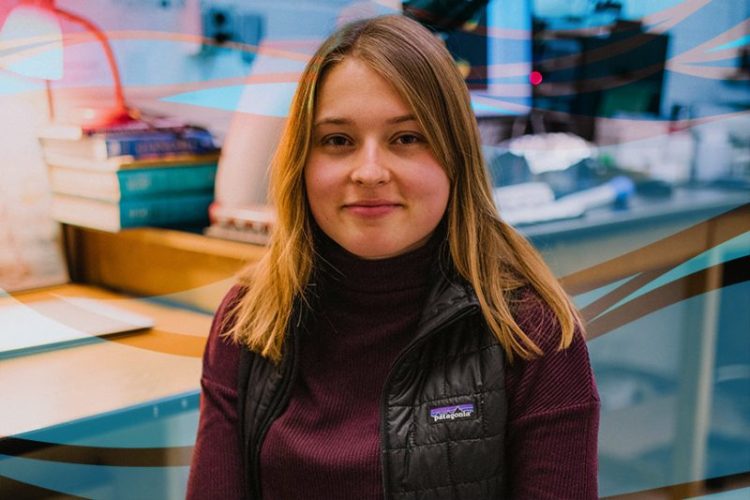
Bound to the ocean
Karine Holmes (’22 geology) researches climate science with Alan Wanamaker, professor of geological and atmospheric sciences.
Focused on our future
My journey toward a career as a climate scientist began in Dr. Alan Wanamaker’s Stable Isotope Paleoenvironments Laboratory. I was beginning to ask what issues I deemed important enough to center my future around, and I kept coming back to climate change. It is unequivocal that our planet is warming, making this field unifying on a global scale; it crosses over into multitudes of academic studies, government agencies, cultures and populations. My life until college never exceeded a 20-mile radius defined by school, work and home. I was living under a false sense of security even though 50 years from now Iowa’s landscape and economy could be noticeably different.
"Climate change science crosses borders and cultures while having the power to unite scientific pursuits on a global scale."
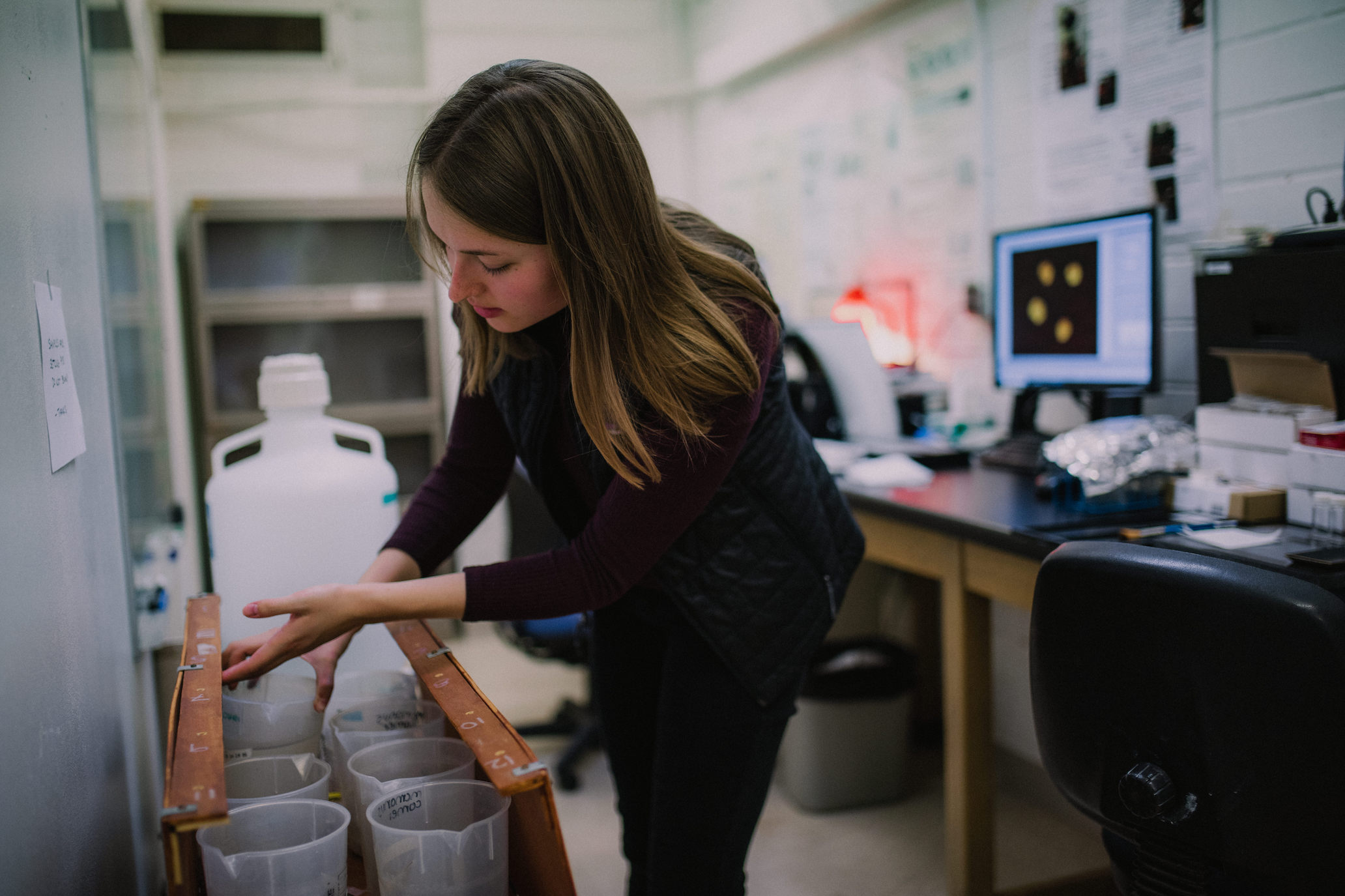
Over the past three years, my research has reformed my views. I research and work in the field of paleoclimatology, or the study of past climates, to give insight into future shifts using archives such as stalagmites and shells that preserve signals from the atmosphere and ocean thousands of years ago. I have contributed to projects using stalagmites from the Columbian Andes; Arctica islandica bivalves from Ingøy, Norway; and stalagmites from caves in Portugal. My work has helped me understand the truth that we are bound to the ocean, and it is in our best interest to fight for its preservation.
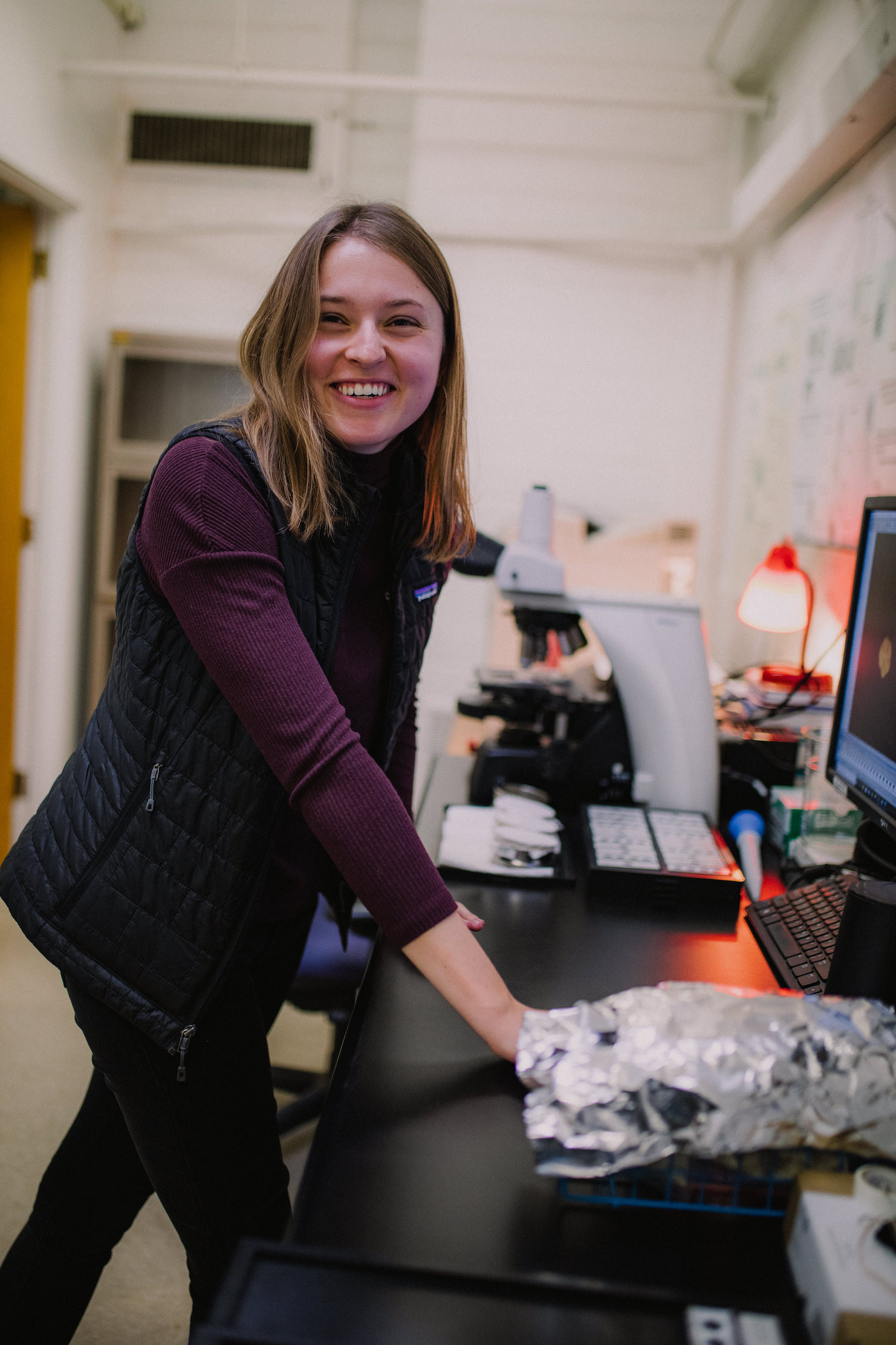
The ocean and Iowa
During my summer internship aboard a National Science Foundation research vessel, I voyaged across the Pacific Ocean and contributed to multiple research initiatives. I learned that rising ocean temperatures could impact regions a thousand miles from a coastline, such as central Iowa, and it reaffirmed to me the importance of researching the climate’s impact on our oceans.
Sea floor sediment
My recent virtual internship with the Lamont-Doherty Earth Observatory at Columbia University gave me the chance to design, conduct and write an independent research project reconstructing the Eastern Equatorial Pacific water column to better understand how ocean conditions have varied throughout the past.
They shipped me all the required equipment, and thanks to my mentor Dr. Wanamaker, I used a lab in Science Hall I. I spent most of my time behind a microscope picking foraminifera species out of sediment that was collected from the sea floor. Then, I shipped those samples off to New York where they ran them on the mass spectrometer for isotope analysis. Understanding how the thermocline in the Eastern Equatorial Pacific has fluctuated over the past 62,000 years can provide invaluable input for climate models and future assessments of the region.
Research has made me ...
More decisive about my future and reinforced to me the urgency of our climate crisis.
Uniting scientists
Climate change science crosses borders and cultures while having the power to unite scientific pursuits on a global scale. As a climate scientist, I am in the unique position to foster exchange across multiple disciplines, which is critical as our climate crisis requires interdisciplinary collaboration to formulate the sustainable solutions we need.
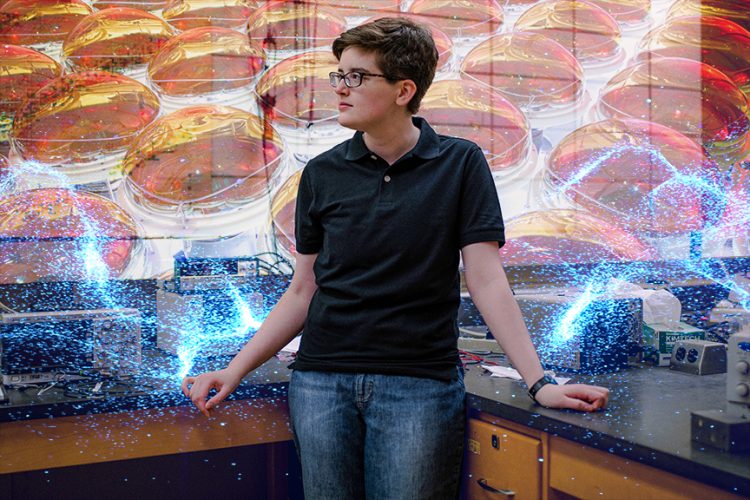
The quest to quantify weirdness
Emily Pottebaum (’22 physics) is exploring the weirdness of the universe with Mayly Sanchez, LAS Dean’s Professor of physics and astronomy.
Tiny particles, big questions
I became interested in experimental neutrino physics during a trip to Fermi National Accelerator Laboratory (Fermilab) my freshman year, which is our nation’s premier particle physics lab. Now I work for Dr. Mayly Sanchez on the Accelerator Neutrino Neutron Interaction Experiment (ANNIE), which is a neutrino detector at Fermilab.
Neutrinos are tiny particles that rarely interact with the world around us. There are trillions of neutrinos going through you right now! Particle physicists are interested in studying neutrinos because they behave oddly compared to other particles and could be the key to learning more about the big questions we have about the universe — for example, what is dark matter, and why is the universe full of matter?
My work on ANNIE focuses on calibration — making sure the detector is working as expected — and data analysis. There is nothing as cool (in my opinion!) as being able to detect and study the tiniest, most fundamental pieces of the universe. Being able to contribute to our collective understanding of the fundamental nature of the universe is exactly what I want to do as a physicist.
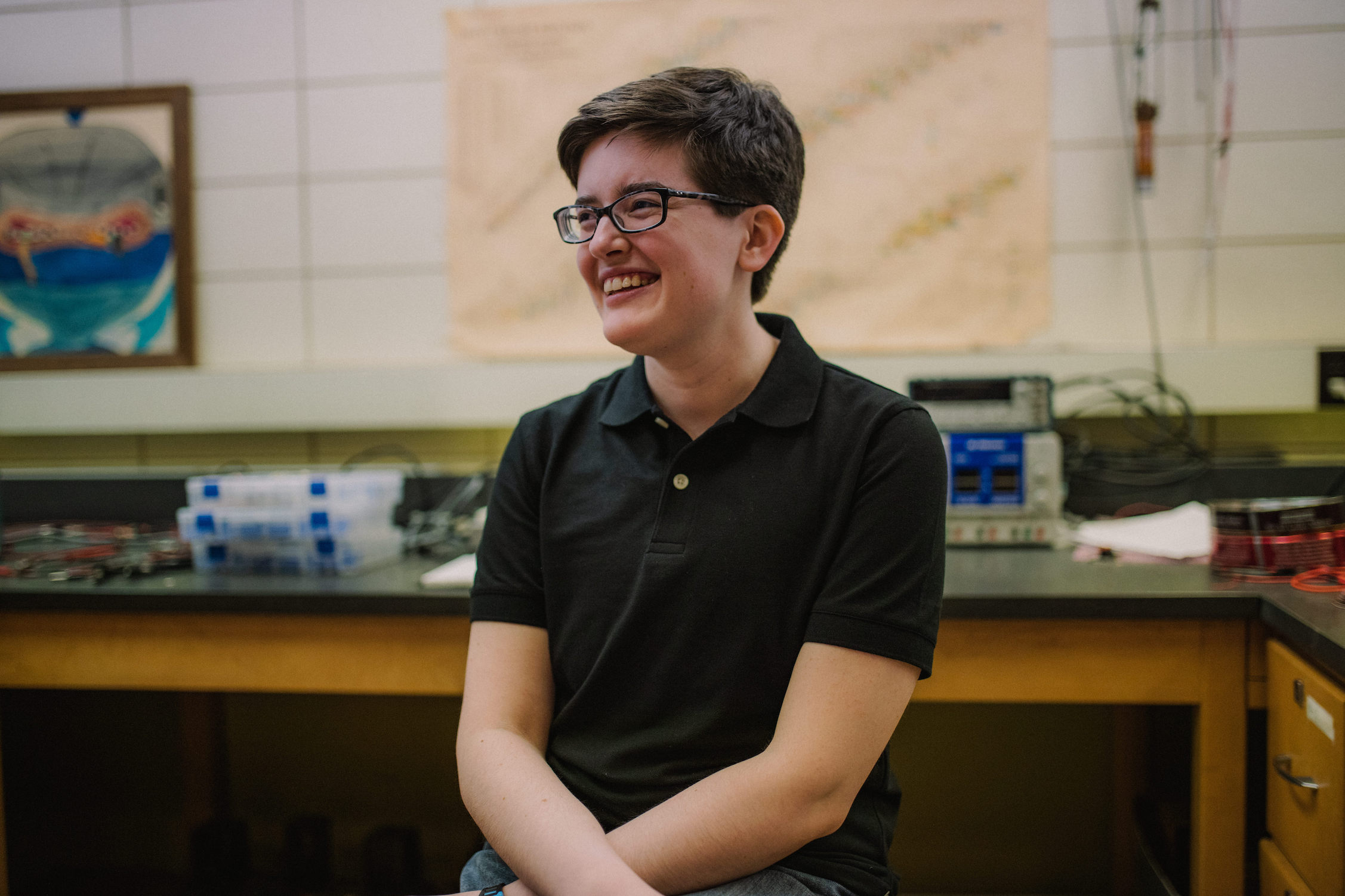
“Babysitting” ANNIE
Because of the COVID-19 pandemic, my work for ANNIE is online. I access computers at Fermilab from my laptop, and from there I use the detector and work with data. Operating a particle detector, even remotely from my laptop, will never not be cool. On any given day, I may be taking data, writing programs that search through data, or processing and analyzing data. I also take shifts to monitor the detector and the neutrino beam. I like to say I’m babysitting ANNIE. If, or when, something unexpected happens, I alert my fellow collaborators and do what I can to mitigate negative effects.
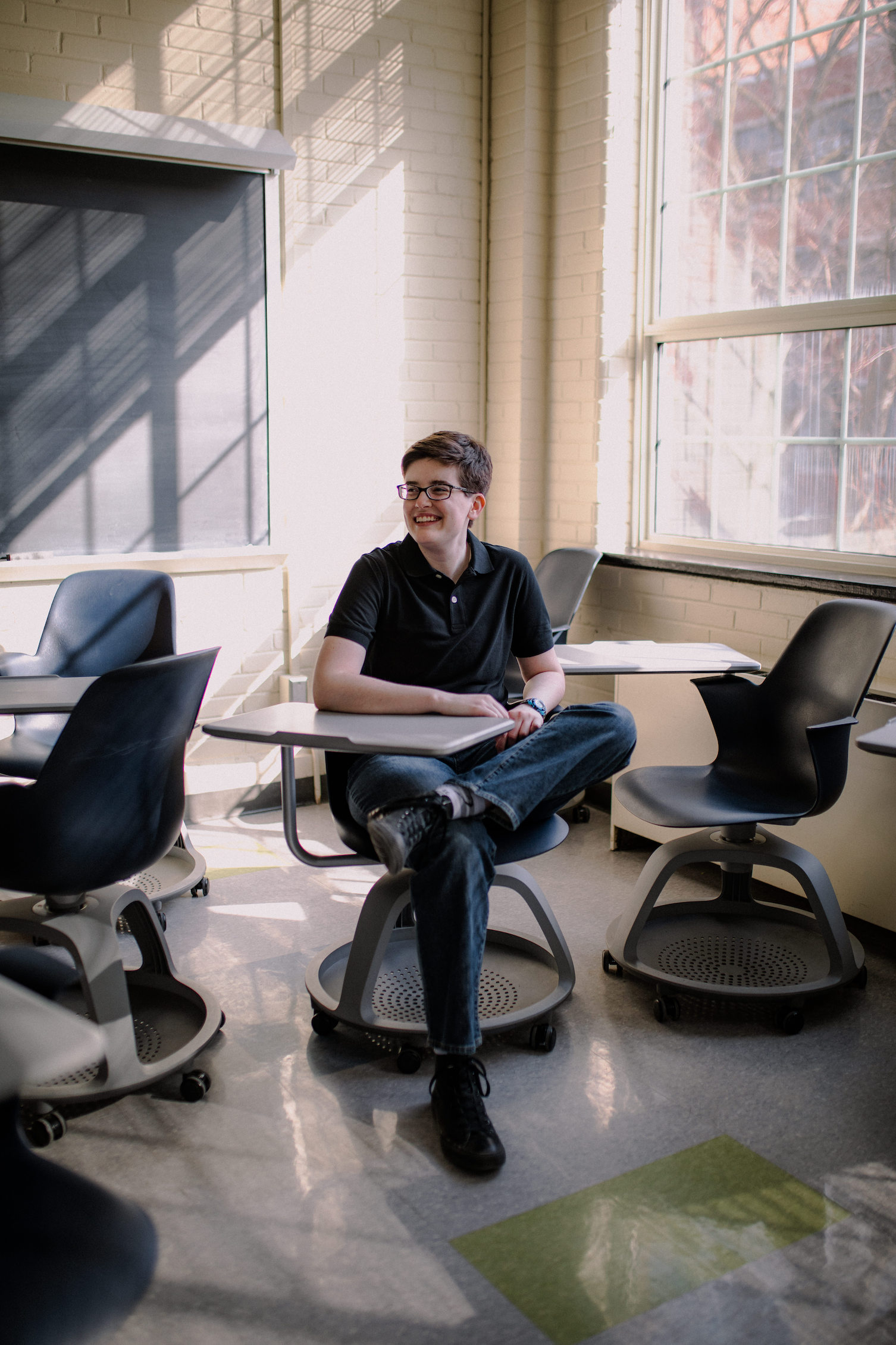
Our weird world
Neutrinos are weird. Seriously, they’re so weird, and so many of the questions I want to investigate through research stem from that weirdness. Why are neutrinos weird in certain specific ways? How is their weirdness related to some of the biggest mysteries of the universe that physicists are still unable to explain? How can we detect and quantify that weirdness?
Hands-on detector design
I also spent a summer doing research for another experiment that’s building a detector. This was my first time working on electronics, and I had a lot of fun getting my hands dirty! I developed a new circuit board for the detector. Designing and testing it meant my desk was covered in wires and soldering equipment, and I loved every second of it.
My global community
I collaborate with grad students, postdocs and faculty members from institutions across the country and around the world. I’ve practiced communicating physics with people at various levels of expertise, and made quite a few friends along the way.
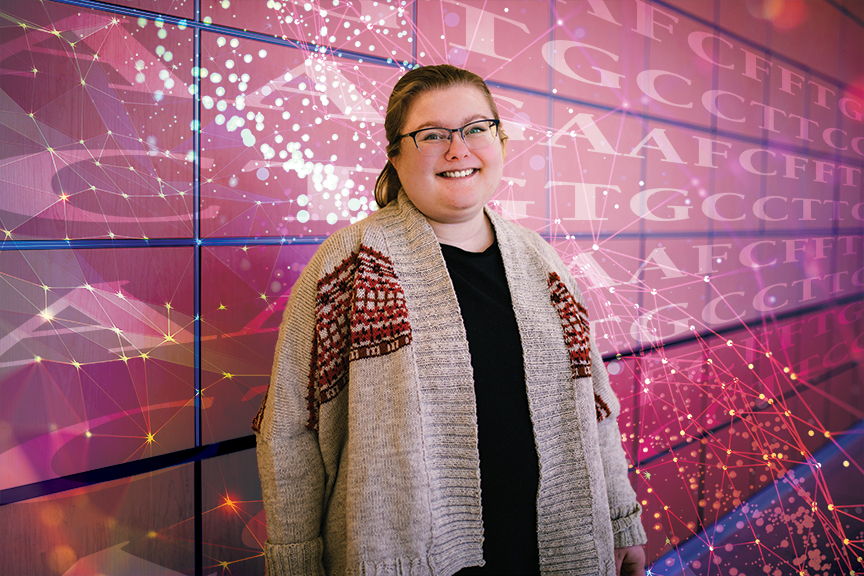
The thrill of complex equations
Tiffany Geistkemper (’21 mathematics) found interdisciplinary inspiration studying bioinformatics with Karin Dorman, professor of statistics.
Math and viruses
I originally heard about bioinformatics in my first college biology course, and I found this idea of combining my favorite fields to solve scientific problems extremely exciting. After gaining a strong foundation in computer science, mathematics, statistics and genetics, I tried research in the field and never looked back. I love being able to contribute to biological problems using all of my favorite subjects, and I get to collaborate with Dr. Karin Dorman, an amazing research mentor and teacher.
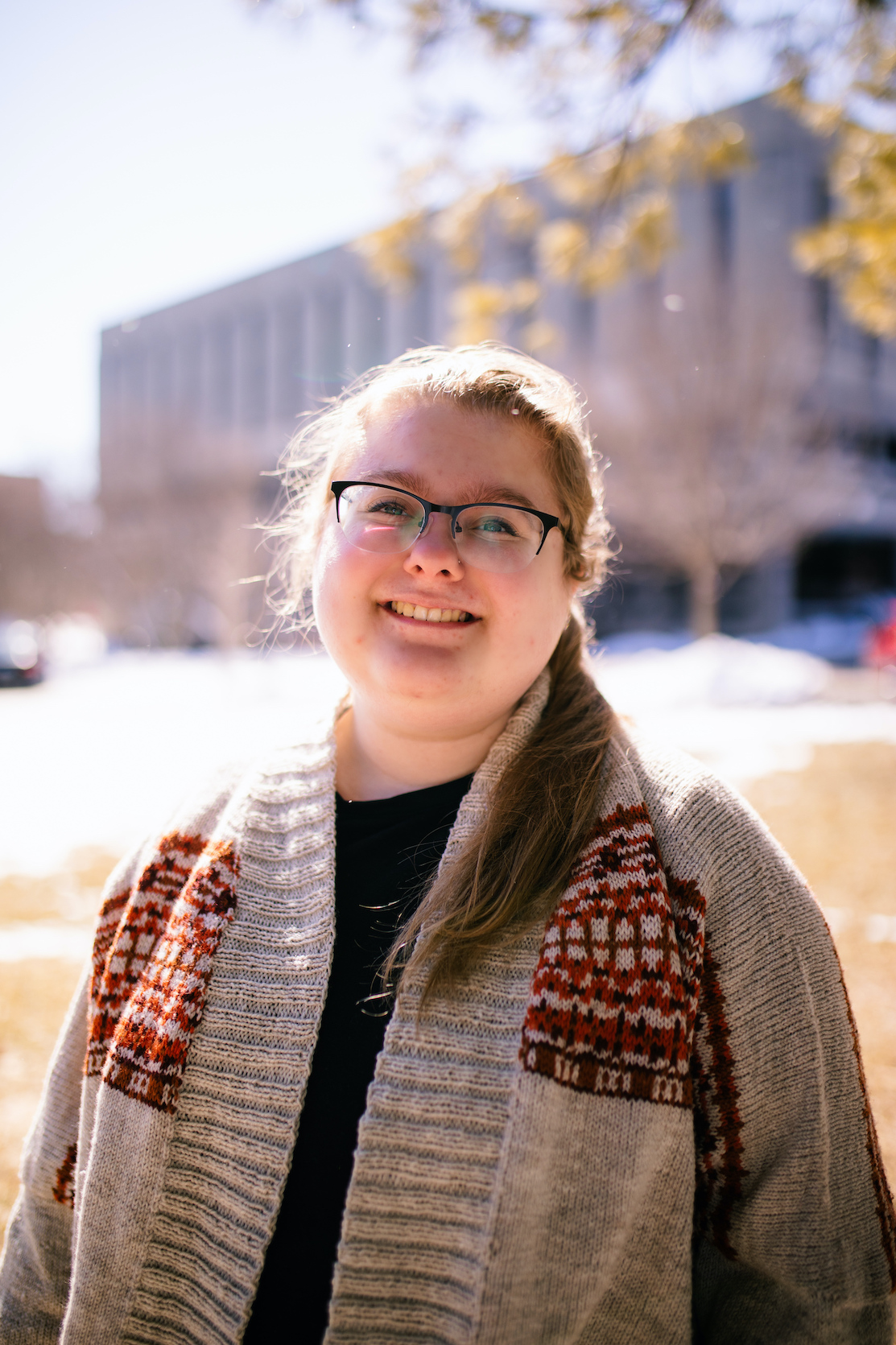
I’m creating a mathematical model to represent how a specific enzyme edits the genome of a specific bacteriophage, or a virus that infects bacteria. In simpler terms, I’m representing how a certain protein affects a certain bacterial virus using mathematics. Seeing and manipulating the complex equations in my research always thrills me, and I love how I continue to learn and get better with every equation I work on.
High-powered research
My research involves a lot of interdisciplinary work with a deep understanding of computer science and biology on top of mathematics. I often have to connect remotely to high-powered computers since the data I’m working with is so big.
Analyzing big data
Bioinformatics is extremely important to me for two main reasons. The first is to create software to analyze big data since data is being created faster than we can interpret it. The second is to understand how to best use this software and other analyses. If a project uses software that doesn’t make sense to use for the given data, the results of the project will most likely be incorrect. So, it is important to understand how and why to use certain ways over others.
My research mindset
I’m very confident in my skills and knowledge, but working on such an open-ended question with no single correct answer or clear direction was a big shock to my brain. My courses gave me guidance on how to solve complex problems, but they never asked me to work with something of this magnitude.
Learning how to think like a researcher and create my own path hasn’t come easily, and I’m still learning how to do this. The more I practice, though, the better I get.
Curing diabetes
I would like to be one of the researchers that cures Type 1 diabetes in individuals who have it and prevents it from manifesting in those who don’t have it. My sister and my dad both have Type 1 diabetes, so it would mean a lot to be a part of the solution.
